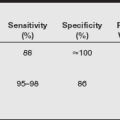As most healthcare professionals will know, looking after your health is incredibly important. When we get sick, seeking healthcare should be the first thing that we do. It’s great to know that qualified doctors and nurses are on standby to care for us when we’re unwell.
One of the pillars of good healthcare is prevention, that is, strategies that aim to prevent illness and injury. These can be broken down into three types of prevention: primary, secondary, and tertiary. This helpful article will explain what all three of these prevention types mean and give some key examples of each. So, continue reading to learn more about this valuable topic.
Primary Prevention
Primary prevention in healthcare refers to certain strategies or interventions aimed at preventing disease or ill health, mostly before they occur. Primary prevention focuses on reducing risk factors and promoting healthy behavior to prevent the onset of injury or illness.
As nurses who have completed online family nurse practitioner post grad programs know, some
key examples of primary prevention in healthcare include vaccines, health promotion, and environmental strategies. For instance, air purifiers, which were developed because of the COVID-19 pandemic, and the vaccine are key examples of primary prevention.
Another key example of primary prevention is healthcare staff encouraging healthy lifestyle choices in patients, such as supporting them to maintain a balanced diet, encouraging people to engage in regular exercise, and educating people to avoid tobacco and excessive alcohol consumption. Primary prevention strategies also play a crucial role in preventing chronic conditions like heart disease, diabetes, cancer, and obesity.
Secondary Prevention
This strategy focuses less on direct prevention and more on early detection and intervention to slow down or halt the progress of diseases and health conditions before they become severe and problematic.
Secondary prevention aims to identify problems in their early stages, when they are treatable and somewhat manageable, which will hopefully reduce complications and longer-term impacts on patients.
Some key examples here are screening programs, such as Pap smears for cervical cancer, mammograms for breast cancer, colonoscopies for colorectal cancer, and prostate screening. Other examples include regular blood pressure monitoring and cholesterol tests, which aim to identify cardiovascular risks before they become serious problems leading to cardiac arrest, heart disease, or stroke.
Some other key examples of secondary prevention include routine blood sugar testing to allow for early diagnosis and management of diabetes, which can prevent complications such as blindness, nerve damage leading to amputation, or kidney disease.
When it comes to mental health, specialized mental health assessments and early interventions can help to detect and treat conditions such as anxiety, depression, or major psychiatric disorders.
Secondary prevention also includes measures such as post-exposure interventions, such as antibiotics when someone is exposed to bacteria, or the monitoring and treatment of prediabetic patients to prevent them from getting type 2 diabetes.
Tertiary Prevention
Finally, tertiary prevention in healthcare focuses on managing the impact and severity of existing diseases or health conditions to prevent patient deterioration, any further complications, or outright disability. This prevention type aims to improve a patient’s quality of life, enhance or modify their functionality, and reduce any longer-term health impacts through various treatments, rehabilitation, and ongoing medical interventions.
Some key examples of tertiary prevention include rehabilitation programs for patients recovering after a cardiac arrest, which help them recover and prevent future heart attacks. Similarly, physical or occupational therapies for patients recovering from injury, strokes, or chronic health conditions such as arthritis can help them regain and maintain mobility and independence.
Other examples include management programs for folks with chronic diseases such as diabetes, asthma, and HIV/AIDS can ensure that people take their required medications and make adequate lifestyle modifications, and healthcare staff can provide regular monitoring to prevent severe complications from these conditions. Another key example of tertiary prevention includes pain management strategies and medications for people with chronic pain conditions.
For those with terminal illnesses, palliative care is a tertiary prevention method with a focus on providing comfort and relief of pain. Peer support groups, self-help groups, and individual and group mental health therapy help people cope with chronic mental health disorders, including substance use disorder, hopefully reducing relapses and improving overall well-being and quality of life.




